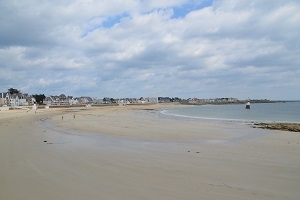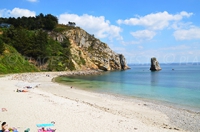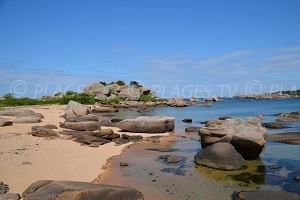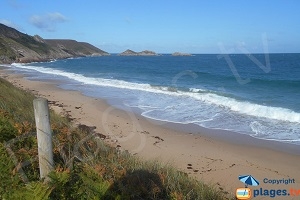Ploumanac'h in France - Pure Pink granite rocks
In the heart of the Pink Granite Coast, situated between Trégastel and Perros-Guirec, you will find the famous rocks of Ploumanac'h which is one of France’s favourite villages. The group of islands called the “Sept-Îles” can be seen on the horizon, its unique reserve for seabirds and its beaches and walking trails make it a popular destination in high season.
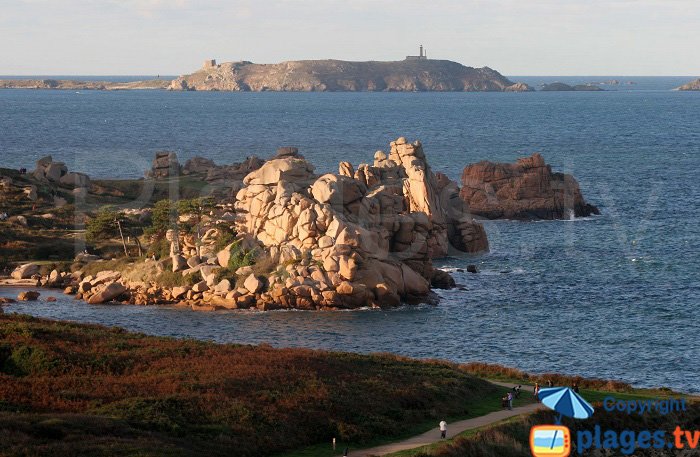
Porz Rolland and the Ile aux Moines
At the very beginning of the Pink Granite Coast, you will find Porz-Rolland. In the distance, Île aux Moines, its lighthouse and its fort, the only island that can be reached, the others being part of the nature reserve sheltering the only colony of gannets in France, puffins, seals ...A large part of Ploumanac'h coastline belongs to the Conservatoire du Littoral which protects it.
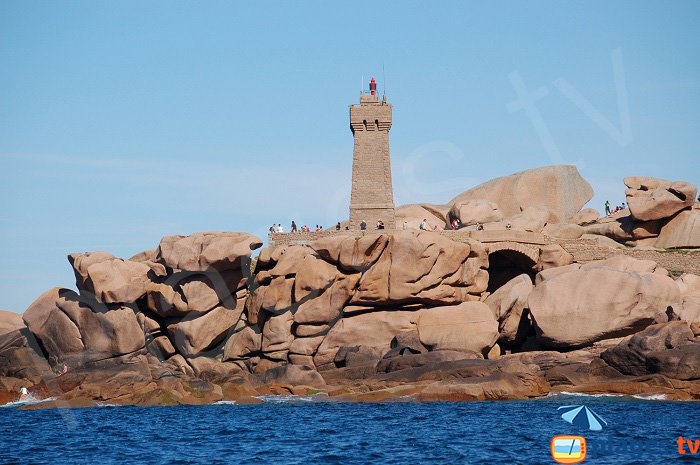
Mein Ru lighthouse (red stone).
These strange rock piles come from a magma bubble that never managed to reach the surface about 600 million years ago. Only erosion, a few millimetres per year, has succeeded in uncovering it. The infiltrating rain has dug out faults and split the blocks, giving them strange shapes.
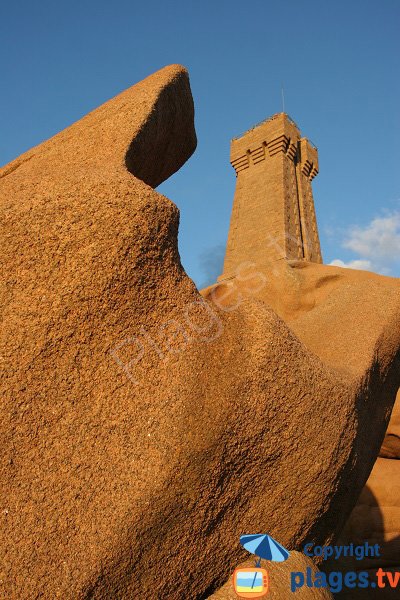
Like those of petrified waves...
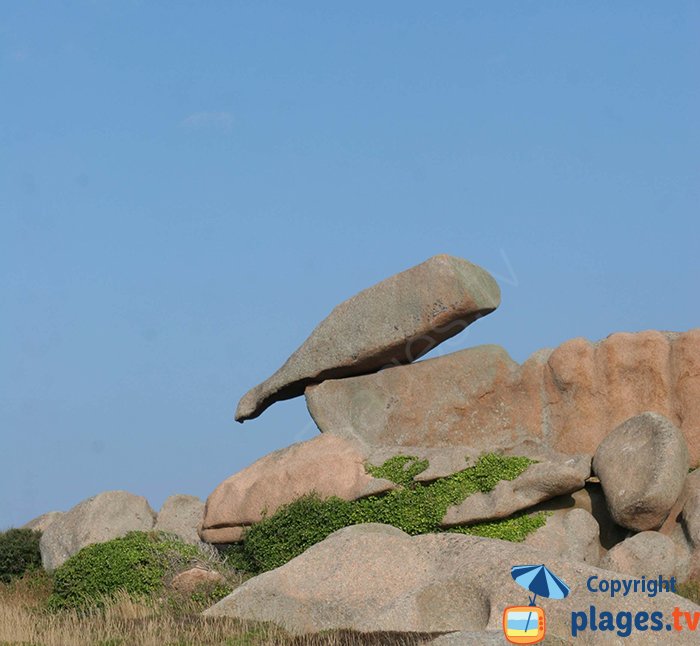
... a bottle. There are also the tortoise, the witch, the Egyptian etc.
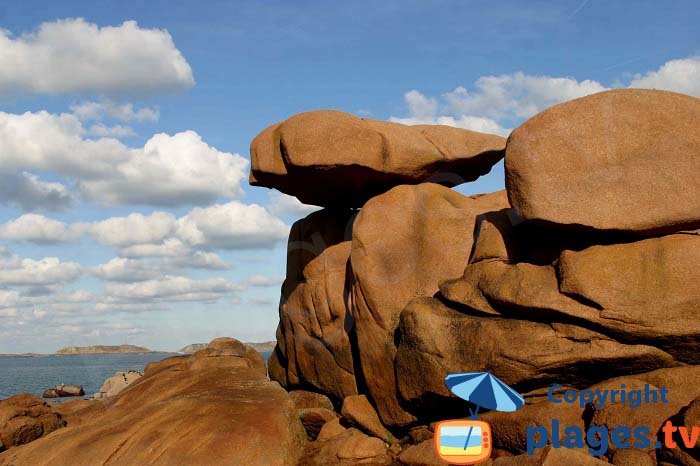
... or whatever the imagination will tell you. Some rocks appear balanced precariously. But they have been in place for millions of years. Neither the strong winds nor the violence of the waves have yet succeeded in destabilising them. It is said that only children with a pure heart can succeed in moving some trembling rocks. What is certain, however, is that the beauty of these rocks in the setting sun leaves a lasting impression on you.
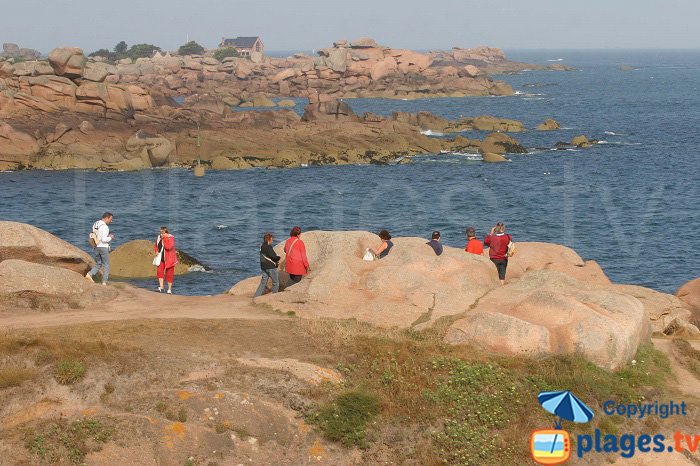
You can begin by approaching these chaotic rocks by following the customs trails (in the distance you can see the Renote peninsula in Trégastel). The Conservatoire du littoral has been signposting the trail for about twenty years to avoid unnecessary trampling on the moor and the fauna which have gradually been restored.
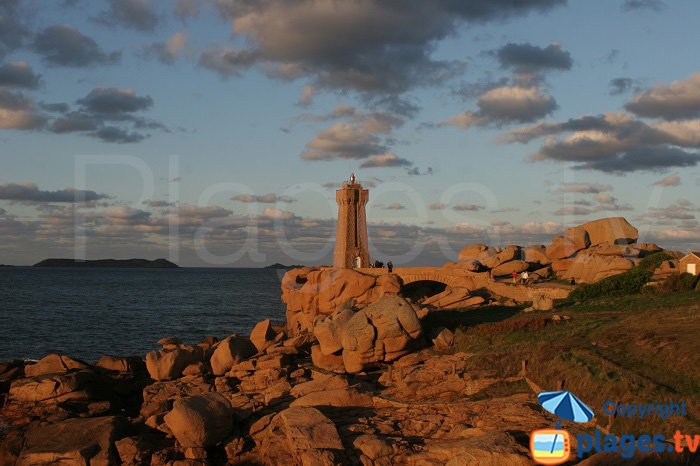
If you want to try some rock climbing, this can be done close to the coast. The rocks are rounded and not very slippery (except those submerged at high tide). Beware of big waves on stormy days; not only can they enthral you but they can also sweep you off your feet.
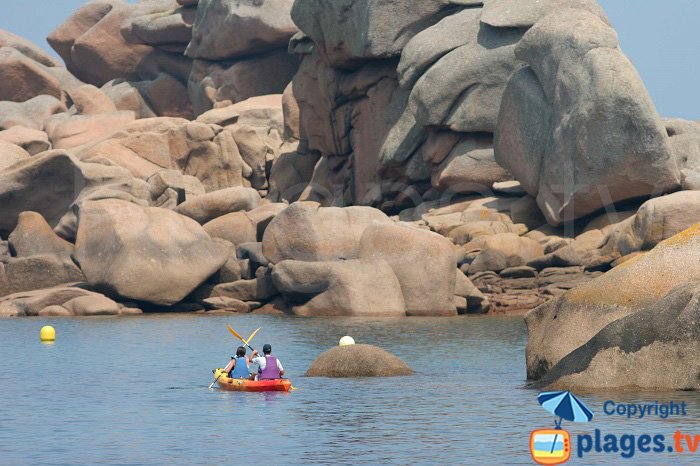
Or why not explore the coastline in kayaks or dinghies, you will be amazed of what you can see. The nautical base of Trégastel or that of Trestraou nearby offer a rental service, accompanied or not, of kayaks, dinghies, catamarans..
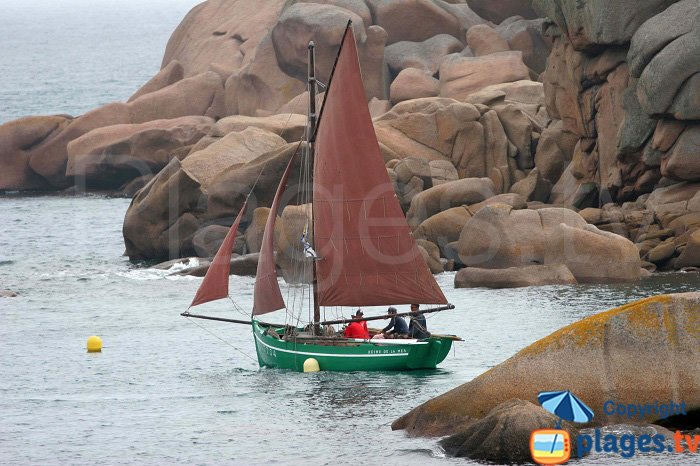
Or even better in an old fashion sailing boat. Many of them have been restored in recent years.
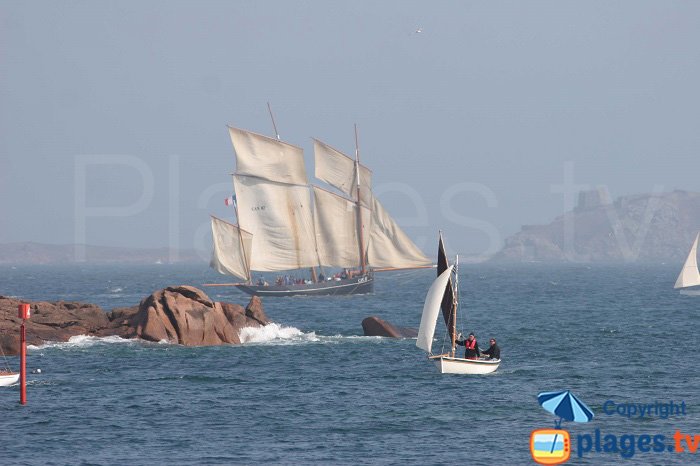
This brings us to the subject of regatta held each year, and every four years, a major one in the port of Ploumanac'h.
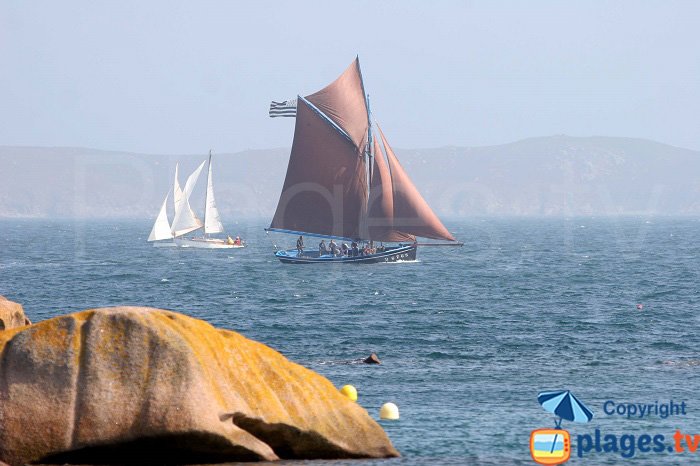
The Dundee Sant-C'hireg can also take you to the Sept-Îles. The captain, Denis Le Bra, will tell you all the local sea stories. Animation guaranteed.
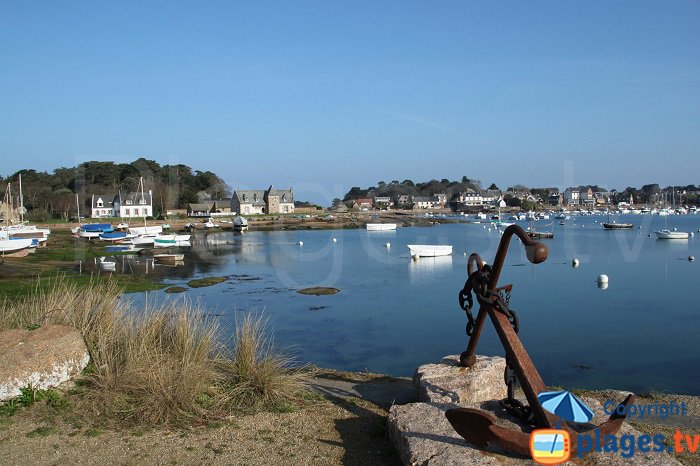
Port of Ploumanach
The port of Ploumanac'h, a haven of peace, always in water. Unlike the town-centre and its restaurants, often over-crowded in high season, the bistro of the port and the restaurant of Rochers and their view to the south on the port, are very peaceful.
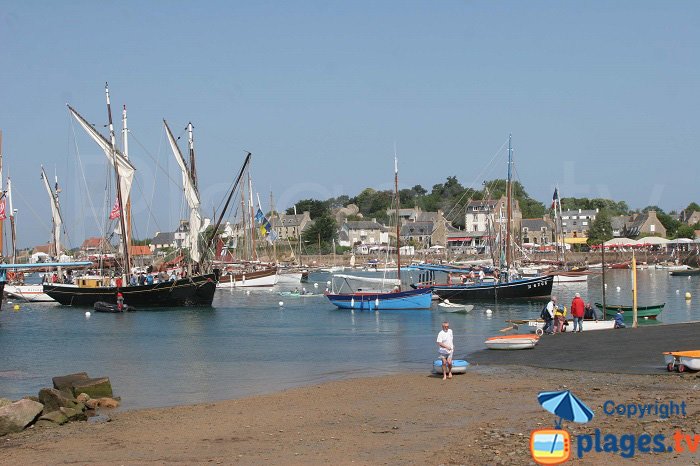
A port with old ships at anchor.
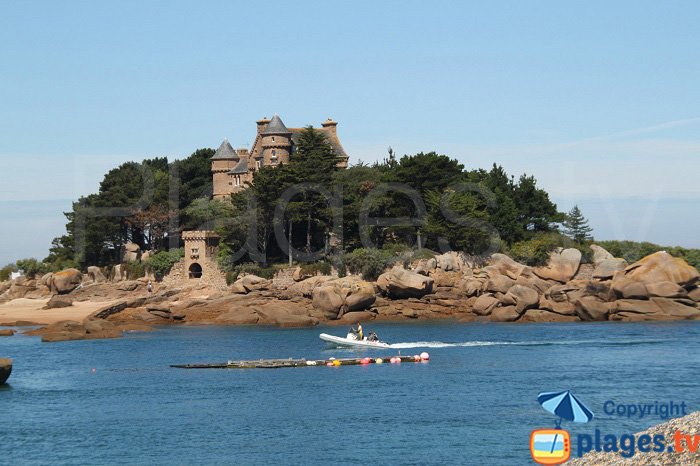
The castle of Cost Aeres, built on its island, surrounded by pines. The writer Colette stayed there, and also some French personalities.
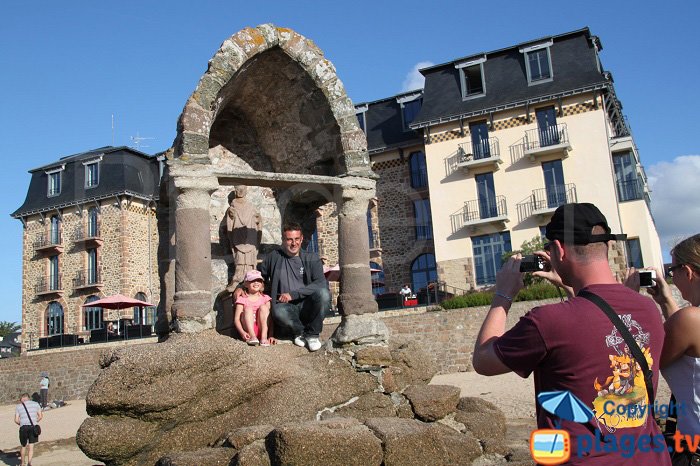
In a totally different way, here is Sant C'hireg (Saint Guirec) in its oratory on the beach of the same name. He arrived from England, in the 5th century, to evangelise the natives. Another legend, this time proved by the stigmata still present: until the twentieth century, it was customary for young girls to throw needles on the statue. If one remained planted, it announced a marriage. The original statue is in the neighbouring chapel. Its stone replacement makes it harder to receive the needles. Does this explain the decline in marriages?
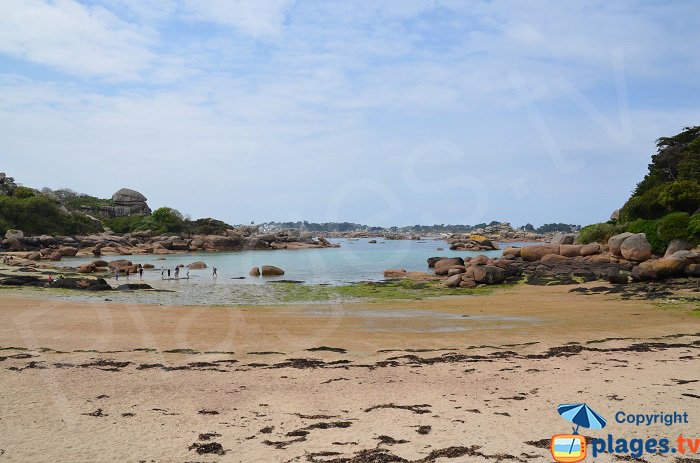
The Saint-Guirec shoreline is a small paradise at high tide. Opposite is the Chapeau de Napoleon, rock on which Gustave Eiffel tested his windmills. The house you can see belongs to his descendants.
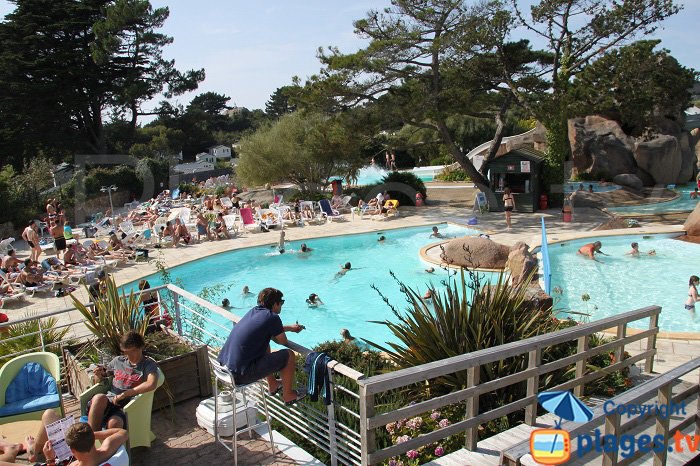
Not far away, the Ranolien, one of the most beautiful campsites in France.
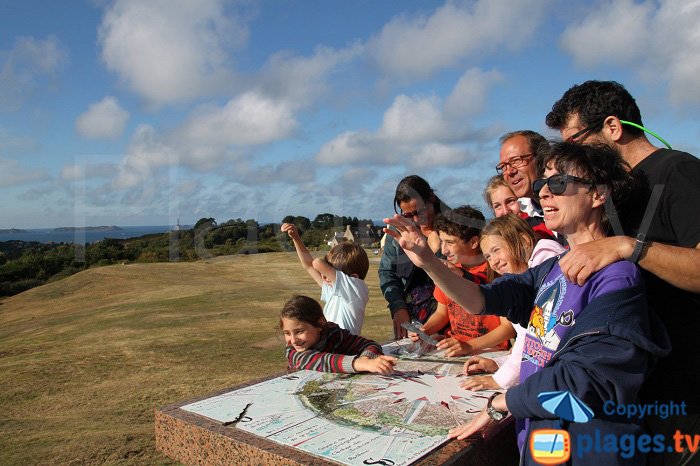
The Mound of La Clarté overlooks Ploumanac'h and its treasures. Little known, it offers one of the most beautiful views on the coast. It is so called because the lord of Barac'h, one day lost on sea under foggy conditions, and fearing his boat would be shipwrecked on the rocks of Ploumanac'h, promised to build a chapel in honour of the Virgin at the spot where the coast appeared. A ray of supernatural light illuminated the mound (probably Druidic place), then a chapel was built:
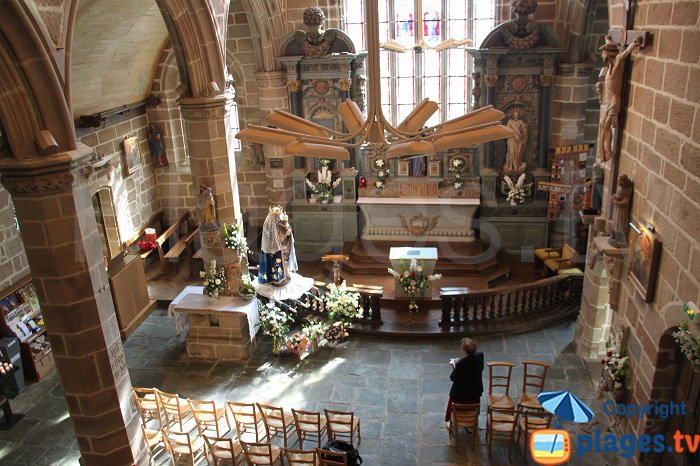
Notre-Dame de La Clarté, a chapel still open that has this peculiarity of having a Way of the Cross painted by Maurice Denis, friend of Gauguin, who lived here.
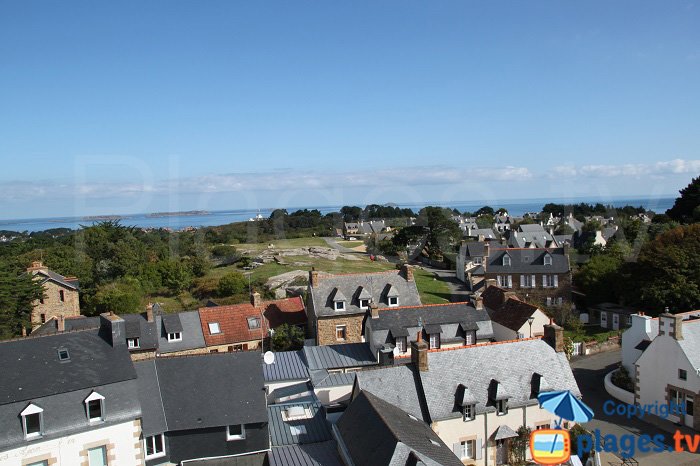
View of the mound, from the top of the bell tower of Notre-Dame de La Clarté.
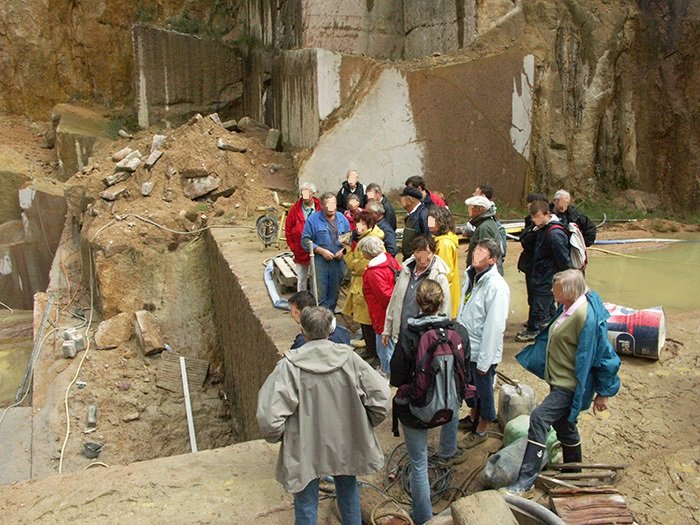
The pink granite quarries of La Clarté can sometimes be visited. This granite has been used for some of the most beautiful Parisian monuments.
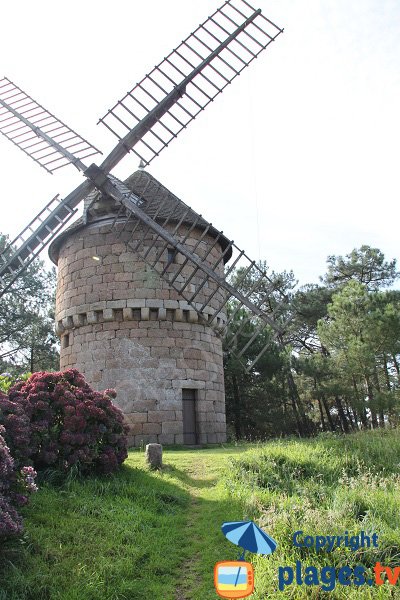
There are four mills still visible in the surroundings, including that of Crac'h, at La Clarté, always in working order ...
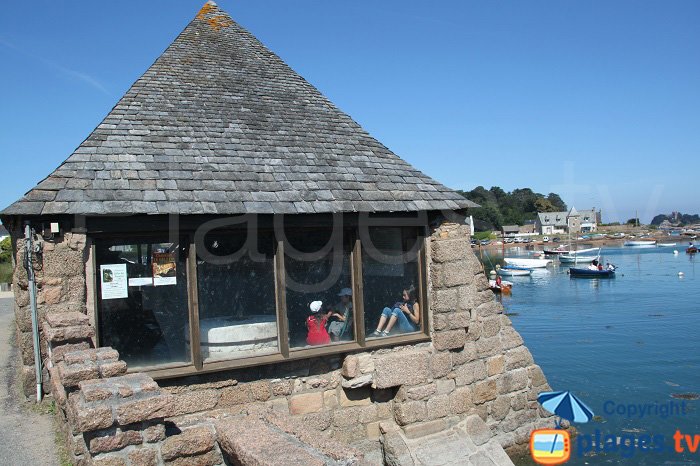
... and the two tidal mills on the port of Ploumanac'h (Do not say "Ploumanache", but Ploumanak. Or just say “Ploum” as the locals call it). They can be worked at high and low tide, to grind grain, or flax.
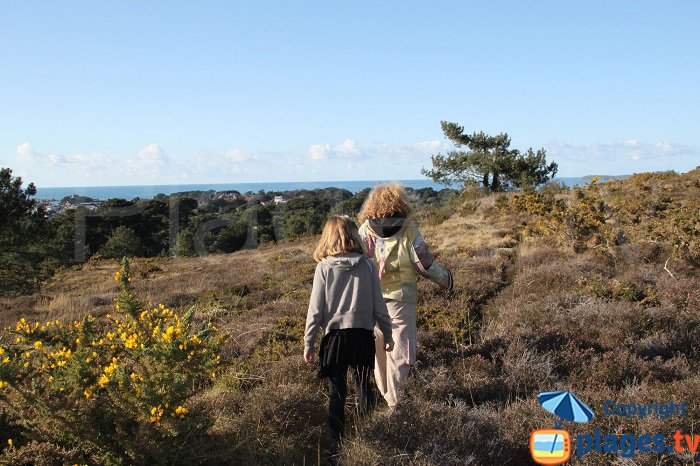
From the mound of La Clarté to Ploum, beautiful unspoiled moors surround the semaphore.

